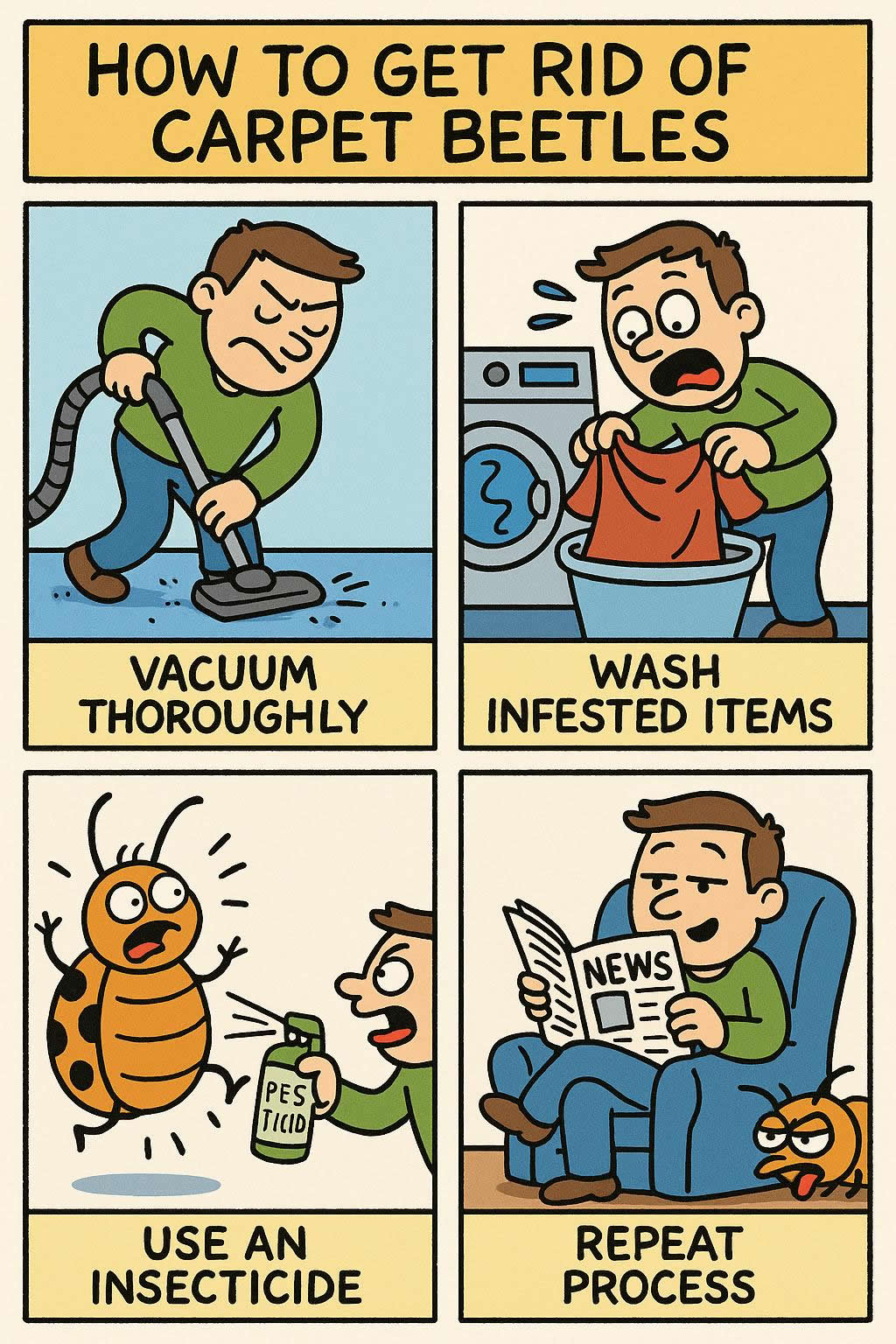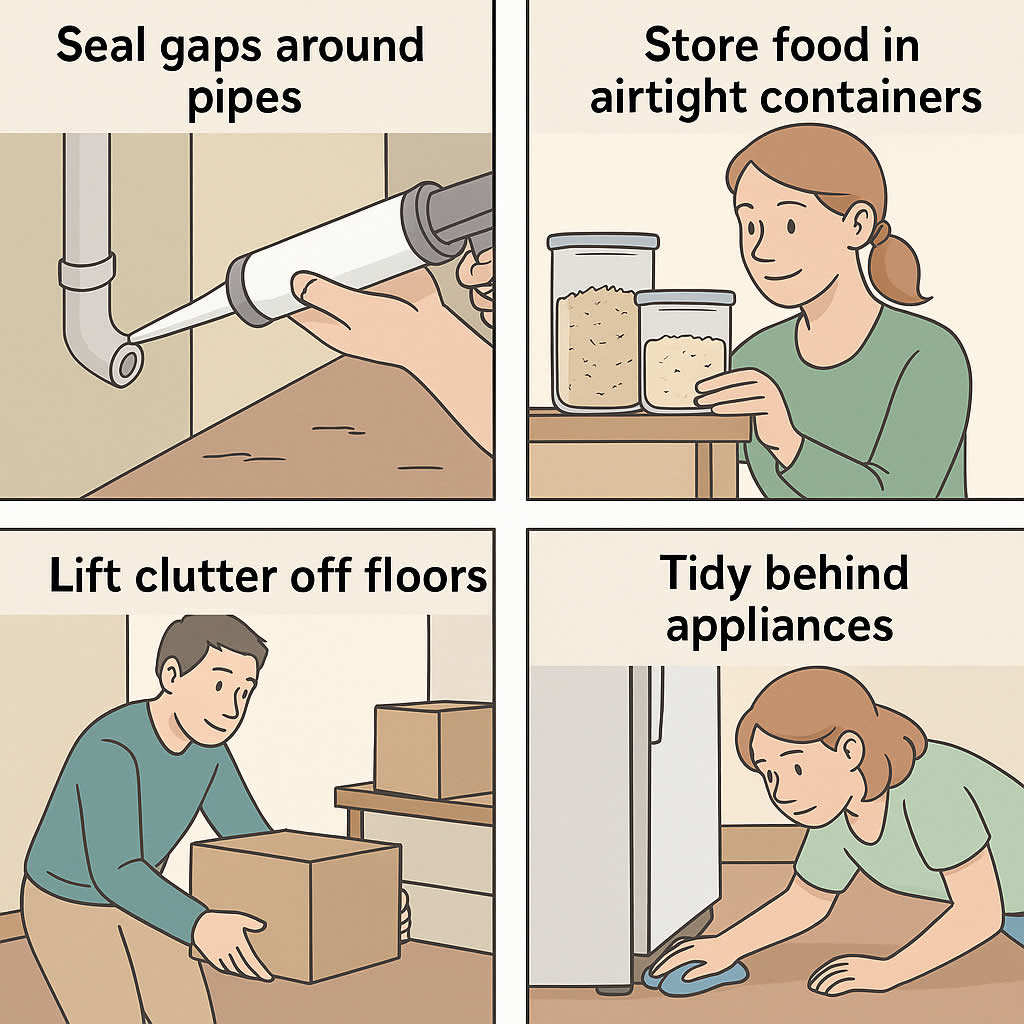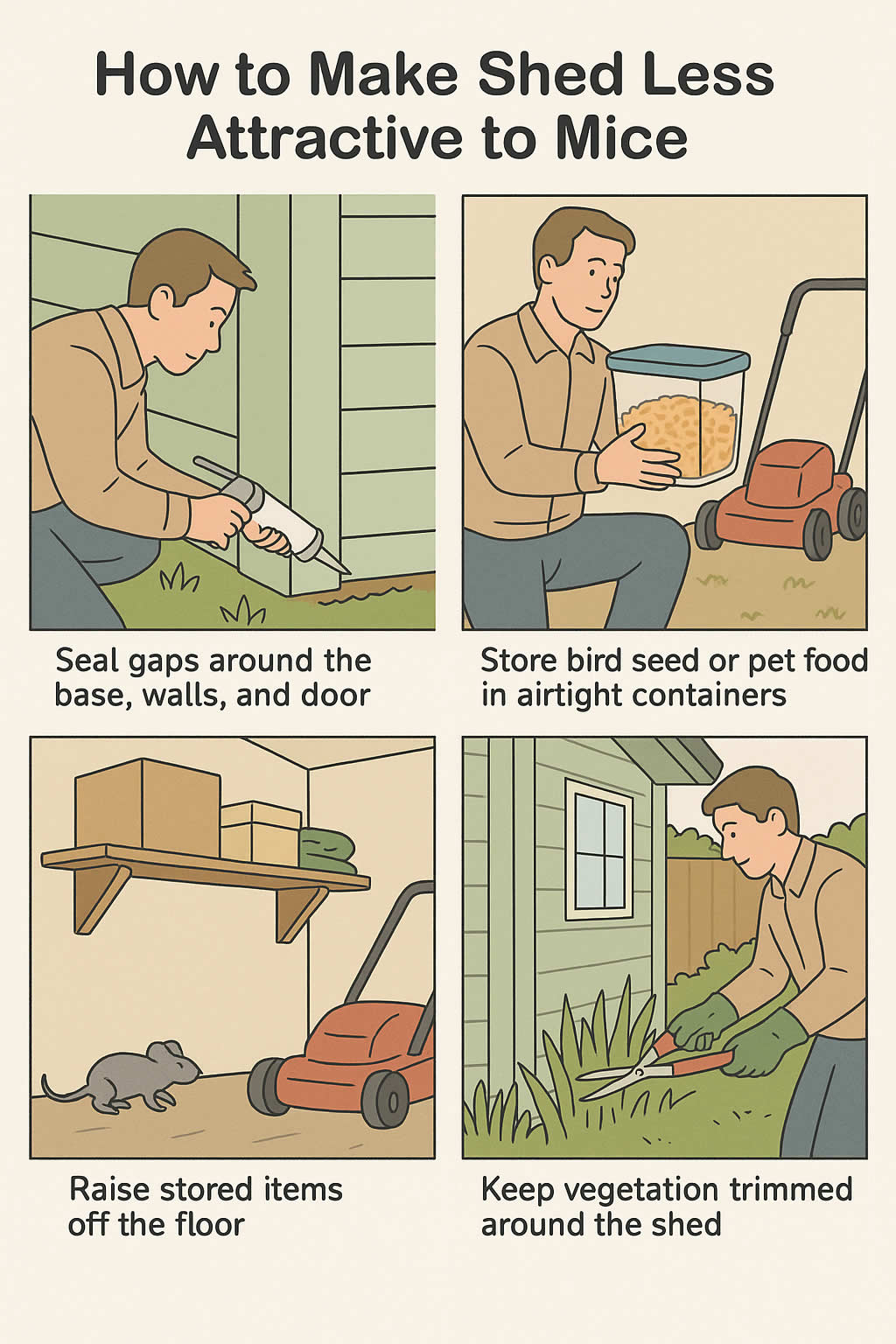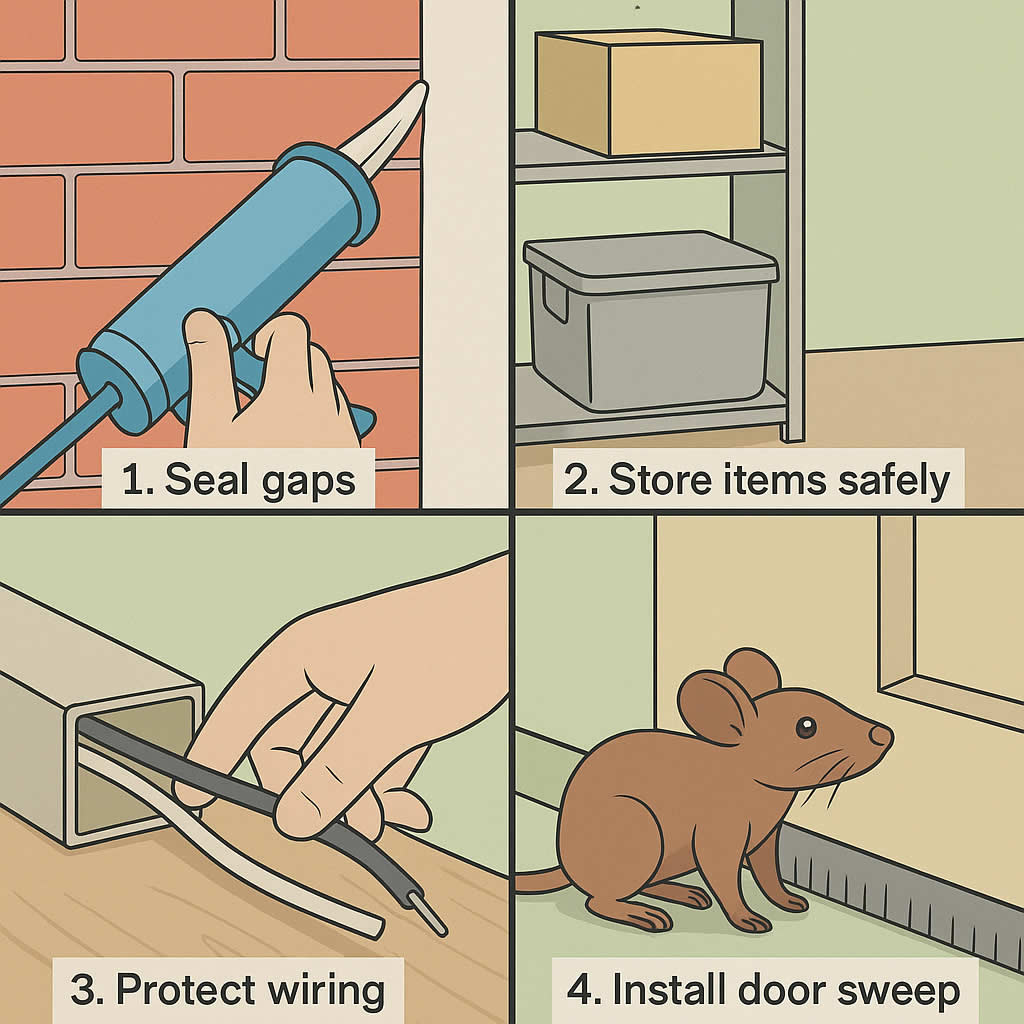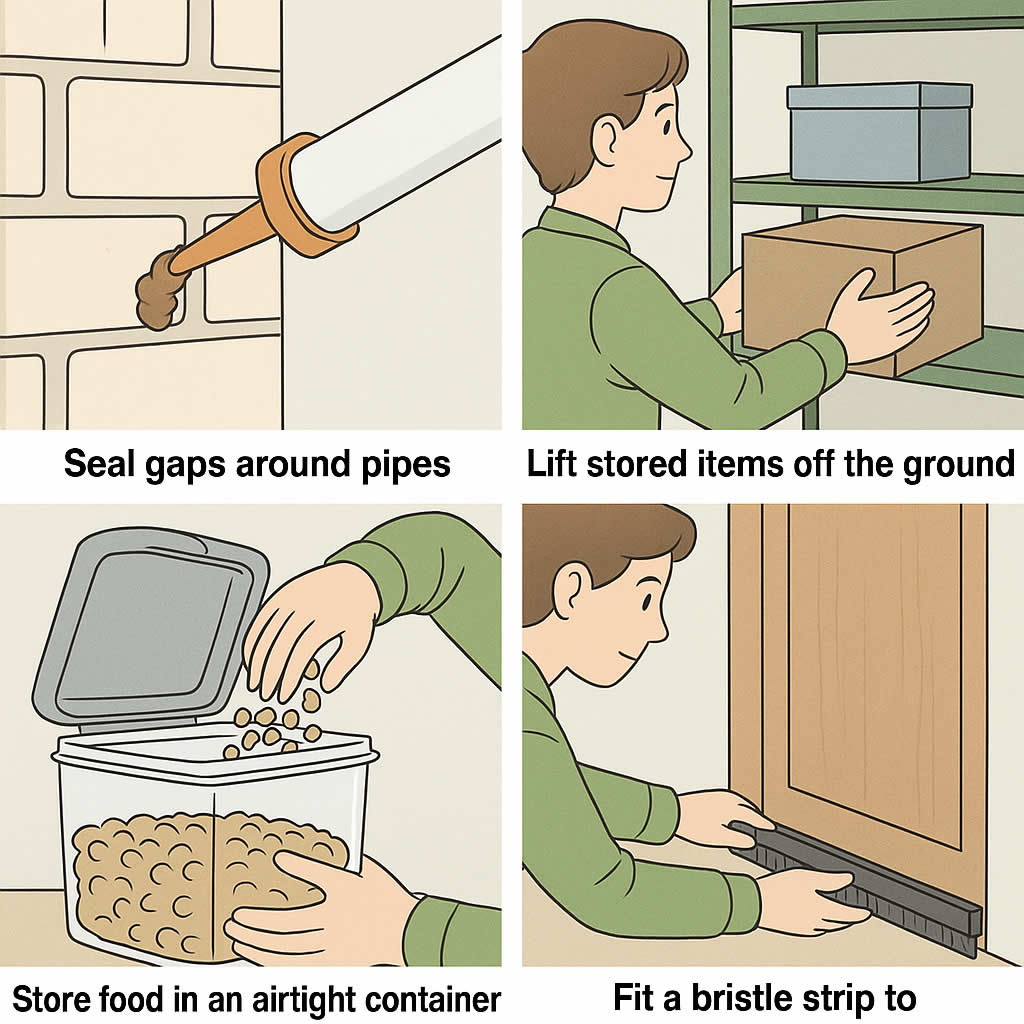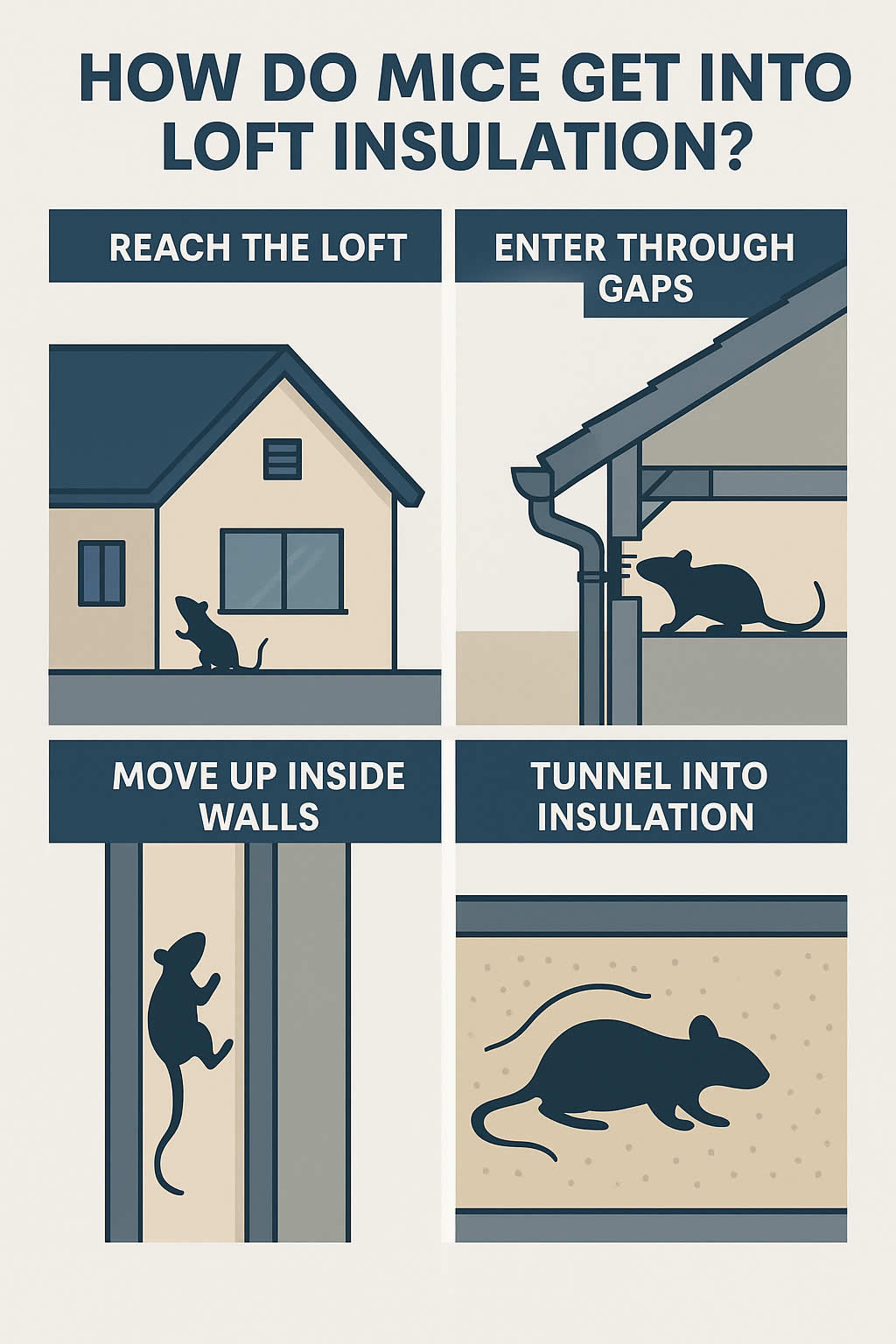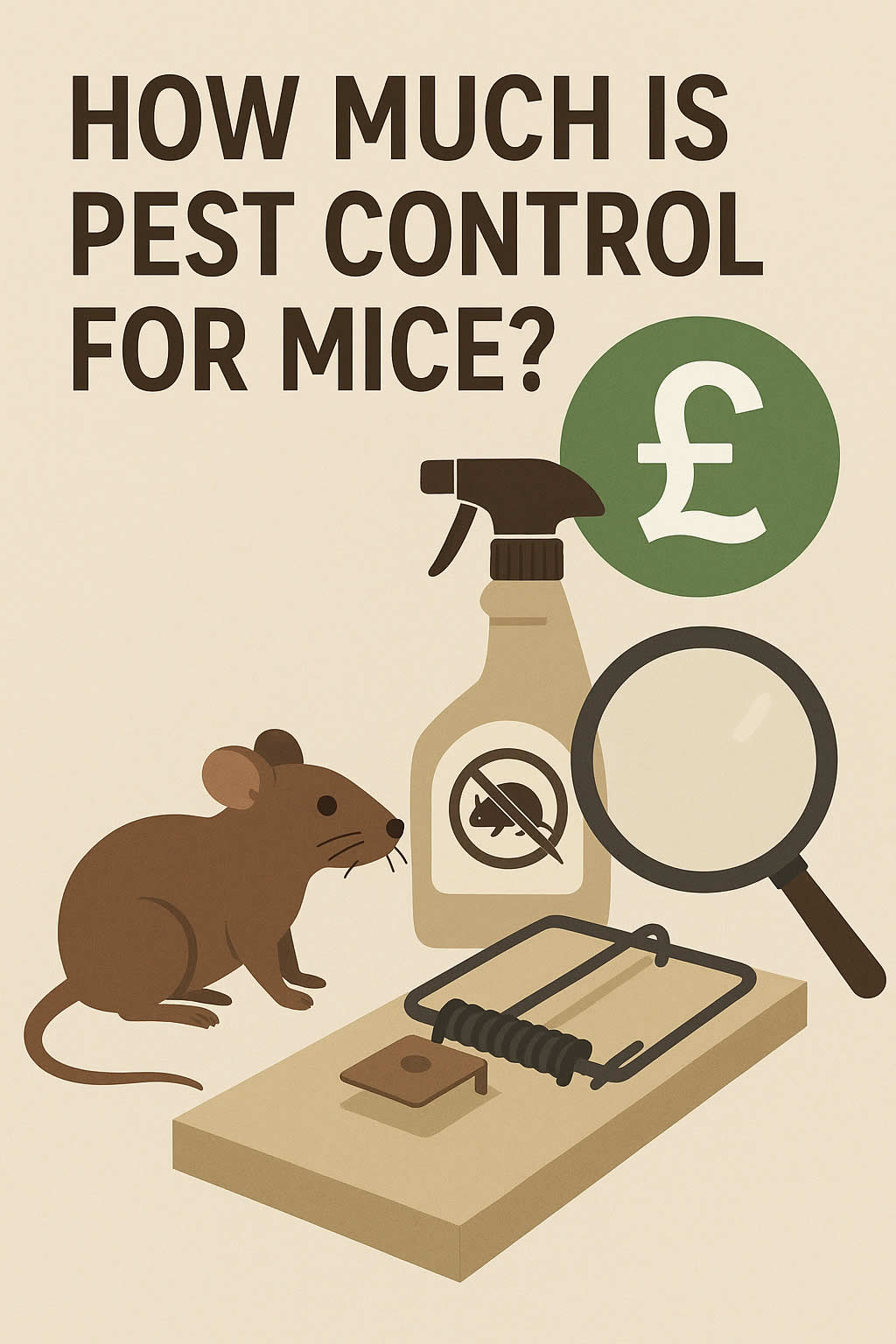Related Queries
ToggleIf you’ve spotted strange bald patches on your carpet or tiny, hairy creatures tucked in the corners of your home, you’re probably dealing with carpet beetle larvae. These little pests are small but destructive. Once they settle in, they can be stubborn. You don’t need to panic, though – if you understand how they work and know what steps to take, you can get rid of them and keep them out.
This guide will walk you through the whole process – in plain, everyday English. You won’t find jargon or vague advice here. Just straightforward steps that actually work.
What are carpet beetle larvae, and why are they a problem?
Carpet beetle larvae are the immature stage of carpet beetles. While the adult beetles don’t cause much trouble – they mostly feed on pollen – the larvae are the ones that do the damage. They feed on natural fibres like wool, feathers, silk, leather, and even pet hair or dead insects.
These larvae are small, often about 4mm long, and covered in bristly hairs. They usually hide in dark, quiet places where they’re not disturbed. That might be under your sofa, behind furniture, inside wardrobes, or along skirting boards.
They can be hard to spot, but the damage they leave behind is usually more obvious. Once they start feeding, they chew holes through carpets, clothes, blankets, and anything else with animal-based fibres.
How do you know if you’re dealing with larvae and not adult carpet beetles?
This is a good place to start. Adult carpet beetles look like small, rounded beetles – sometimes black, sometimes speckled. You’ll often see them near windows or lights.
But the larvae look totally different. They’re usually:
- Brown or tan with small, hairy bristles
- About the size of a grain of rice
- Slow-moving and more often found on carpets, under furniture, or in cupboards
If you find cast skins (little brown shells they shed as they grow), or if you see them crawling along skirting boards or hiding in fabrics, then you’re probably dealing with larvae. The adult beetles might be nearby, but it’s the larvae you need to deal with first.
Can carpet beetle larvae live in your bed or furniture?
Yes, they can – but not in the way bed bugs do. Carpet beetle larvae don’t feed on blood. They’re not trying to bite you. Instead, they’re after materials like wool blankets, feather pillows, down duvets, or anything made with animal-based fibres. So if you’ve got those on your bed or sofa, the larvae might be there.
They also like places that stay undisturbed – such as under your mattress, at the back of a wardrobe, or inside cushions that don’t get moved around often.
So if you suspect they’re hiding in furniture or bedding, it’s best to give everything a deep clean and treat the area properly.
How do you get rid of carpet beetle larvae?
To get rid of the larvae, you’ve got to combine a few different steps. One method alone won’t do the job. Here’s what works best when you put it all together:
- Start with a deep clean
The first thing you need to do is clean everything properly. Don’t just go over the surface. You’ve got to get into the edges, underneath furniture, and inside fabrics. Vacuum carpets, rugs, sofas, beds, wardrobes, and drawers. Use the crevice tool to reach into gaps.
Focus on places like:
- Under furniture or beds
- Around skirting boards
- Inside cupboards or wardrobes
- Behind radiators and curtains
After vacuuming, empty the contents outside straight away. You don’t want to keep the larvae or eggs in your home.
- Wash and treat soft materials
Anything that can go in the washing machine should be washed on a high heat (at least 60°C). That includes:
- Blankets
- Towels
- Clothes
- Cushion covers
- Pet bedding
If you’ve got things that can’t be washed, try freezing them for a couple of days. Carpet beetle larvae and eggs can’t survive that. Seal the items in a plastic bag first, pop them in the freezer, and then leave them out to thaw before using them again.
- Use an insecticide for cracks and corners
Once you’ve cleaned and washed, it’s time to treat the home. Use a product labelled for carpet beetles – preferably one that contains permethrin or deltamethrin. Focus on spraying:
- Skirting boards
- Corners of rooms
- Wardrobe bases
- Cracks in floorboards
Always read the label carefully before you use it, and make sure it’s safe to use around pets and children if that applies to your home.
How long does it take to get rid of carpet beetle larvae?
It depends on how bad the carpet beetle infestation is. If you’ve caught it early and you clean and treat thoroughly, you might see a big improvement in a couple of weeks.
But in most cases, it takes several weeks or even a few months of regular cleaning and treatment. The reason is simple: carpet beetle eggs can hatch over time. So even if you clean everything once, more could hatch later.
That’s why it’s important to repeat the process – hoover regularly, keep treating problem areas, and check for signs of new activity.
What kills carpet beetle larvae instantly?
There’s not really one product that kills them instantly, but certain treatments work quickly when used right:
- Steam cleaning – The heat from a steam cleaner can kill larvae and eggs on contact. It works well on carpets, curtains, and upholstery.
- Insecticidal sprays – As long as the product is designed for carpet beetles and used correctly, it should start working within a few hours.
- Diatomaceous earth – This natural powder damages the outer shell of the larvae and dries them out. It’s not instant, but it’s very effective over a day or two.
No matter which method you use, it works best after a thorough clean. The more larvae and eggs you physically remove beforehand, the better your results will be.
Can you get rid of carpet beetle larvae naturally?
Yes, to a point. If the infestation is small or you’re just trying to prevent them from spreading, natural methods can help. Here’s what you can try:
- White vinegar – Mix equal parts vinegar and water in a spray bottle. Use it to wipe shelves, drawers, or anywhere you’ve seen larvae. It breaks down the outer layer of their eggs.
- Boric acid – Lightly sprinkle it on carpets and soft furnishings. Leave it for a few hours, then vacuum thoroughly.
- Essential oils – Some people find lavender, clove, or peppermint oil helps repel beetles. Mix a few drops with water and spray around entry points or baseboards.
Keep in mind that natural options won’t kill all larvae and eggs. So if things don’t improve, you may need to use stronger products or call in professional help.
Do carpet beetle larvae come back?
They can. Even if you clean everything thoroughly, if you miss a few eggs or larvae, they might hatch and start the cycle again.
Also, if you don’t deal with the source – like a bird’s nest in the loft or an old wool rug in storage – they’ll keep coming back.
To stop them returning:
- Keep vacuuming regularly, especially in hidden corners and under furniture.
- Store natural fabrics in airtight containers or sealed bags.
- Check windows, vents, and chimneys for entry points and seal them off.
- Inspect second-hand items before bringing them into your home.
Are carpet beetle larvae harmful to humans?
They don’t bite or sting, but some people react to the tiny hairs on the larvae. If you’ve got sensitive skin, you might notice red, itchy patches where you’ve come into contact with them. This is an allergic reaction, not a bite.
You’re more likely to have a reaction if the larvae have been crawling through bedding or soft furnishings. If this happens, clean the area, wash all fabrics, and treat the space to remove the source.
Can you see carpet beetle larvae with the naked eye?
Yes, you can. They’re small, but not invisible. Most larvae are about 3–5mm long. They’re usually brown or tan, slightly fuzzy, and shaped like a tiny caterpillar or worm. You’ll often find them tucked in quiet corners – behind furniture, in folds of fabric, or inside drawers that haven’t been opened in a while.
If you think you’ve found one, have a closer look. If it’s got bristly hairs and moves slowly, it’s probably a carpet beetle larva.
Final thoughts – How to stay ahead of carpet beetle larvae
Getting rid of carpet beetle larvae takes effort, but once you get into the routine, it becomes manageable. The key is not to ignore the signs. As soon as you notice bald patches, shed skins, or the larvae themselves, start cleaning. Follow that with targeted treatments and stay consistent.
Here’s a quick recap of what works:
- Deep clean carpets, furniture, wardrobes, and storage spaces
- Wash or freeze any infested fabrics
- Use sprays or powders made for carpet beetles
- Repeat your cleaning and treatment every couple of weeks
- Keep checking quiet areas for signs of new activity
If you stay on top of it and deal with things early, you can get your home back to normal – without having to call in pest control.

